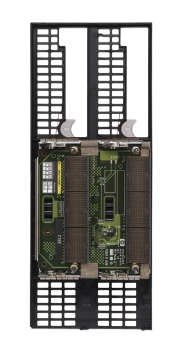Odyssey blurs the line between x86 servers and business critical systems
 On November 22, HP introduced the Odyssey project, which will expand the freedom to choose hardware platforms and operating systems for deploying business-critical applications. In the next two years, the company will complement its business-critical systems portfolio with blades based on Intel Xeon processors that support Windows and Linux. For the HP Integrity Superdome 2 flagship model chassis, the DragonHawk blade will be released, and for the standard HP BladeSystem c7000 and c3000 shelves - the HydraLynx blade.
On November 22, HP introduced the Odyssey project, which will expand the freedom to choose hardware platforms and operating systems for deploying business-critical applications. In the next two years, the company will complement its business-critical systems portfolio with blades based on Intel Xeon processors that support Windows and Linux. For the HP Integrity Superdome 2 flagship model chassis, the DragonHawk blade will be released, and for the standard HP BladeSystem c7000 and c3000 shelves - the HydraLynx blade.This announcement focuses on expanding the capabilities of Converging Infrastructure for business-critical applications: the HP-UX / Itanium, OpenVMS / Itanium and NonStop / Itanium operating environments running on it today will be complemented by new Linux / x86 and Windows / x86 operating environments.
Over the past five years, the company has significantly expanded the use of many hardware components from HP ProLiant Standard Architecture systems in HP Integrity systems and, at the same time, gradually and consistently transferred HP Unix-based systems to the standard architecture of failover technology. An example is the HP ProLiant DL980 eight-socket rack-mount eight- socket , built according to the HP PREMA architecture, which uses a variety of developments from the HP Integrity Superdome 2 system .
The Odyssey project provides further steps to improve the reliability and resiliency of business-critical systems based on x86 processors, which will allow DragonHawk and HydraLynx to be used in servicing business-critical applications. DragonHawk blades will be installed on all current HP Superdome 2 systems and will support nPartitions hardware partition technology (nPar), used for more than ten years in HP business critical systems. Support for HP Crossbar Fabric internal fault-tolerant fabric will also be implemented. In addition, the new x86 blades on the Superdome 2 with Linux and Windows will use the state monitoring technology and automatic troubleshooting of the HP Analysis Engine. Scalable x86 blades - HydraLynx will be implemented using HP Scalable BladeLink technology, which has proven its effectiveness when used in HP Integrity scalable blades.

The continuity of Linux applications will be provided by the version of the Serviceguard package developed for this operating system used in HP-UX for building high availability clusters. Exit Serviceguard is scheduled for 2012.
')

Finally, for DragonHawk and HydraLynx, the company will offer HP Mission Critical Services (which are now available only in HP-UX, OpenVMS and NonStop environments) designed to help customers ensure high availability by proactively identifying and eliminating potential causes of server failures during maintenance of Windows and Linux applications.
Odyssey will allow today's HP Integrity customers to get Converged Infrastructure to guarantee a high level of availability not only for Unix applications, but also for Windows and Linux, thereby providing additional flexibility and investment protection. In addition, HP customers using DragonHawk can build a 32-socket server on Intel Xeon processors, with several hundred cores in one SMP system. Odyssey also opens up new perspectives for those customers who are focused on Windows, and would like to improve the resiliency and scalability of their business-critical applications without switching to Unix.
At the same time, HP BCS executives stress that HP has invested, invested and will continue to invest in the further development of HP-UX and Itanium-based HP Integrity systems, as well as the OpenVMS and NonStop operating systems.
Source: https://habr.com/ru/post/134242/
All Articles